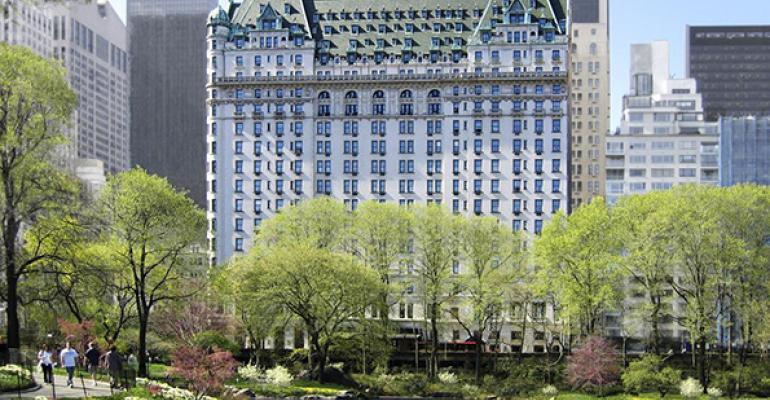With new development no longer on hold due to a renewed flow of equity capital and low-cost debt financing, the hotel market is revving up across the country. Meanwhile, yields are being compressed, and investors are favoring new development. This is particularly true for the New York and Los Angeles hotel markets, both of which are seeing an unprecedented amount of liquidity and have become hot beds for acquisition, development and redevelopment.
NREI spoke with Joshua Emory, a principal with Primrose Capital in Miami, about how the U.S. hotel capital markets are faring, including hotel CMBS. An edited version of that transcript follows.
NREI: What sets the New York City and Los Angeles hotel capital markets apart from other gateway cities in the U.S.?
 Joshua Emory: Differing from other gateway markets in the U.S., both New York City and Los Angeles attract a much broader capital base, creating a very liquid hotel market. With recent political and economic instability abroad, foreign capital, including international banks, sovereigns, EB-5 investors, pensions and life insurers have increased their allocation towards U.S. real estate as a flight to safety. For many of these institutions, New York City and Los Angeles present supply constrained, high barrier to entry hotel markets with strong demand fundamentals. In addition, international tourism in both of these markets are dominated by Canadians, Chinese and Europeans, offering foreign investors a greater knowledge base than other U.S. markets.
Joshua Emory: Differing from other gateway markets in the U.S., both New York City and Los Angeles attract a much broader capital base, creating a very liquid hotel market. With recent political and economic instability abroad, foreign capital, including international banks, sovereigns, EB-5 investors, pensions and life insurers have increased their allocation towards U.S. real estate as a flight to safety. For many of these institutions, New York City and Los Angeles present supply constrained, high barrier to entry hotel markets with strong demand fundamentals. In addition, international tourism in both of these markets are dominated by Canadians, Chinese and Europeans, offering foreign investors a greater knowledge base than other U.S. markets.
NREI: How do New York and Los Angeles compare with each other and other cities when it comes to the hotel capital markets?
Joshua Emory: New York City still remains the most liquid market for hotel capital. Debt financing is not only readily available from all the traditional sources, but is also complimented by the presence of newly created debt vehicles, hedge funds, and a significant amount of foreign capital. Los Angeles continues to be a target market for all the domestic capital sources, as well as a significant amount of Chinese and Taiwanese banks, given the city’s prevalent Asian population.
From an equity perspective, foreign capital has been much more predominant in New York City for direct investment, with many of the major sovereigns making notable investments into the city’s lodging market. That being said, EB-5 has been a strong influence in both markets, mainly due to the substantial Chinese demographic, which has accounted for roughly 80 percent of the investment visas.
NREI: How do things look for hotel capital markets nationally?
Joshua Emory: On a national basis, the hotel capital market environment is pretty frothy right now. Banks, conduits, and life insurers are all actively lending, creating a very favorable borrower’s market. Hotel construction financing is back in full swing, with the lion’s share being financed by banks, mortgage REITs and debt funds. On the subordinate side, mezzanine debt is also back in fashion, providing additional leverage to sponsors for up to 85 percent of the capital stack. With the abundance of capital available, it’s once again possible to arrange up to 95 percent of the needed capital through a layering of senior debt, mezzanine capital and joint venture equity sources.
NREI: How are New York and Los Angeles investors responding to the supply/demand imbalance? Are their approaches different from those of other cities?
Joshua Emory: Since new development had essentially been put on hold until about 2012, much of the hotel investment had centered on distressed acquisitions and rebranding plays. Up until recently, opportunities to acquire properties at or below replacement cost have been available, thereby reducing the desire for investors to take on development risk. Today, those opportunities are far and few between, with demand in many markets still on the rise. In New York City, new development sites are very costly as competition from condo developers has driven up prices. This is the same for many urban markets, including Miami, where the condo market has been incredibly hot. Developers in New York City, Los Angeles, and other urban cores have adapted to deliver needed supply by planning more mixed-use developments with hotel components, or pursuing building conversions for hotel usage. In many other markets, needed supply is being met by ground-up development from investors looking for higher yields. We see this trend continuing in the short term, with rising construction posing potential headwinds.
NREI: How many new hotel properties and rooms are currently under construction, both nationally as well as in the two leading tourist destinations, New York City and Los Angeles?
Joshua Emory: On a national level there were approximately 126,171 rooms under construction in March of 2015, an increase of about 23 percent from the same period last year. New York City accounted for approximately 13,368 rooms (10.6 percent of total), while Los Angeles accounted for roughly 3,387 rooms (2.7 percent of total).
NREI: Is much of the new supply focused on certain brands or markets?
Joshua Emory: Nationally, the upscale and upper mid-scale brands have been the focus of new construction activity, accounting for roughly 67 percent of the total. In Los Angeles, the luxury segment accounts for almost 50 percent of the rooms currently in construction. Geographically, we’ve seen new supply focused in New York City, Miami, Chicago, Washington, D.C., Los Angeles, Seattle, San Diego and Dallas.
NREI: How is hotel CMBS origination doing in New York and Los Angeles compared to nationally?
Joshua Emory: Nationally, pricing for hotel CMBS above $15 million has come down from 5.14 percent in 2012 to approximately 4.73 percent in 2014. In New York City, average pricing was a bit lower in 2014, at 4.59 percent, while Los Angeles averaged about 4.66 percent. Loan-to-values are around 58 percent.
NREI: Where do you see hotel CMBS pricing going over the next five years?
Joshua Emory: While a five-year outlook is difficult to predict, in the near term, I see CMBS pricing coming down slightly, as competition mounts from banks offering attractive non-recourse financing terms.
NREI: Do you see financing for hotel acquisitions becoming more competitive in New York and Los Angeles, as well as nationally?
Joshua Emory: Hotel underwriting has always come down to sponsorship, location, and the flag, which each strengthen the predictability of cash flows in the eyes of lenders. In some cases, strength in one of these categories can offset weakness in others. New York and Los Angeles, much like South Beach, both present strong locations, with well-insulated hotel markets and consistent demand drivers. As a result, New York and Los Angeles are seeing some of the most favorable terms in the market right now in terms of availability of non-recourse debt, low interest rates, and higher leverage. Looking ahead, I see current pricing at very low levels but I don’t expect lenders to get much more aggressive than they are today. That being said, increased leverage and greater availability of non-recourse debt is where I see potential improvement.
NREI: Any advice for hotel developers or investors currently seeking financing in this market?
Joshua Emory: Obtaining financing really boils down to two major components: the initial presentation of the deal and negotiating favorable terms. The initial presentation is meant to accomplish two things: get the lender excited and alleviate concerns. Differing from other asset classes, cash-flows from hotels reset daily, thereby presenting greater risk to potential lenders. As such, when presenting the deal, it is important to focus on the strengths while having factual support which mitigates the weaknesses.
In terms of negotiation, our key has always been to maximize competition among lenders during the capital raising process. It’s incredible what can be achieved when lenders are competing amongst five or six other term sheets. At the end of the day, lenders, much like car dealerships, have an incentive to put out capital. Fortunately for borrowers, right now there is a tremendous amount of capital competing for financing business.

